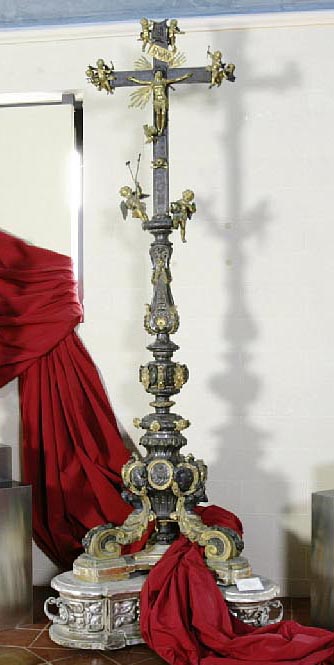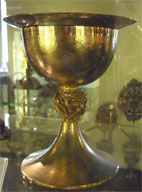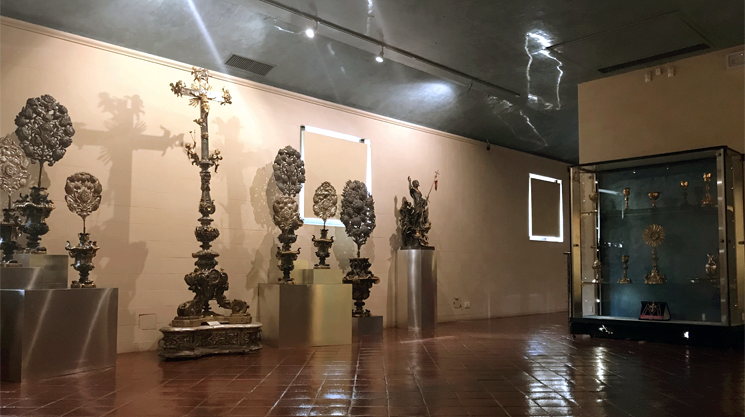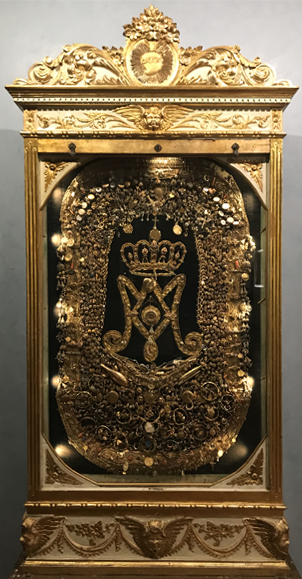The forth room exhibits some works dating from the end of 16th and beginning of 20th century.
 In the middle of the wall there is an altar cross, in melted and carved silver, with some detail in gilded copper. It shows Christ Crucified surrounded by flying angels holding the symbols of the Passion. The triangular base is enriched by male figures holding the vase shaped foot of the cross, decorated with some acorn garlands and a medallion depicting the Virgin Mary of the Assumption. It was made in 1711 by a silversmith from Messina.
In the middle of the wall there is an altar cross, in melted and carved silver, with some detail in gilded copper. It shows Christ Crucified surrounded by flying angels holding the symbols of the Passion. The triangular base is enriched by male figures holding the vase shaped foot of the cross, decorated with some acorn garlands and a medallion depicting the Virgin Mary of the Assumption. It was made in 1711 by a silversmith from Messina.
Along the wall, there are vases with flat flowers, in embossed and worked silver, used for the decoration of the main altar of the Cathedral. Inside the central flower, a little silver door hides relics of different Saints. C. 17-19.
Particularly interesting are the votive offerings to the Virgin of the Graces.
They are golden jewels donated by the faithful of the fisherman village of Pace (Peace) to the Madonna, between the early 19th century and the 20th century. Earrings, necklaces, gold charms, rings, bracelets, watches and gold chains have been sewn together onto a black velvet in order to form a beautiful banner which used to stand in the church of St. Maria della Grotta on the feast day in September. Among the jewels, a tuna and an anchovy can be seen, they are two fish traditionally fished in the Strait of Messina. In the centre of the work there is the Mary’s monogramm and a Virgin Mary’s relic.

In the side show case, a chalice donated by Pope John Paul II, came to Messina in 1988 in the occasion of the canonization of Saint Eustochia Smeralda Calafato. C. 20.
At the end of the room, on the right side, two fragments of the huge chandeliers of the Cathedral are displayed. They testify the terrible destruction of the Cathedral during the WW II bombings. The smaller chandelier, dated 1837, was donated by the citizens of the city as thanksgiving to the Madonna of the Letter who saved the city by the cholera. The bigger one was donated by King Ferdinand II of Bourbons in 1847. It is broken in many fragments. The two chandeliers were hanging in the nave of the Cathedral and they were quite completely melted by the fire caused by some bombings fallen on the church.


